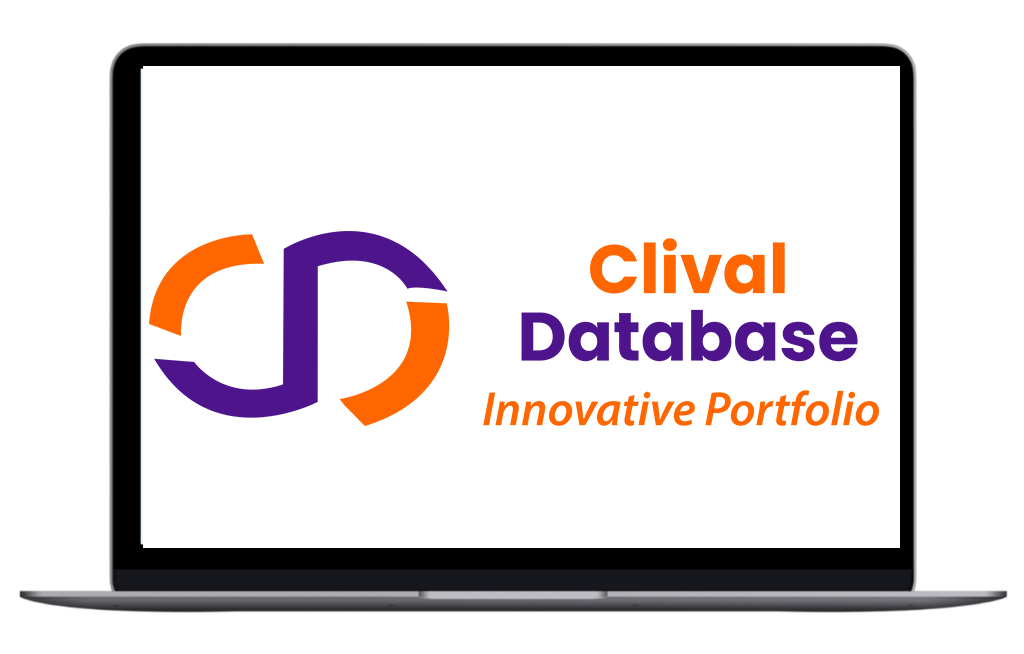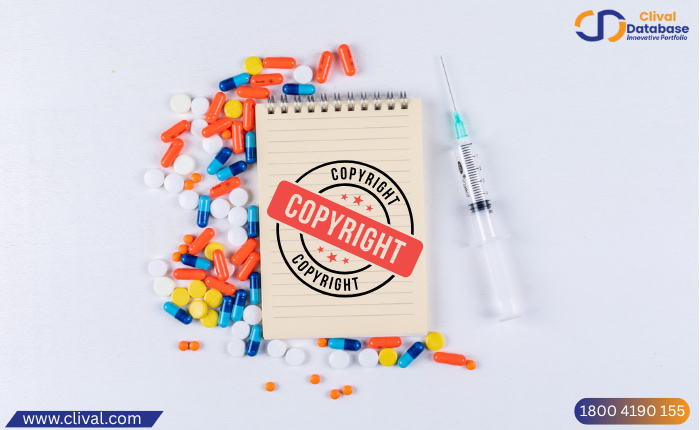15 Biologics are Going off Patent (2025–2029)
Global biologics sales crossed $411 billion in 2024, with top-performing therapies treating cancer, autoimmune disorders, and rare diseases.
Now, a growing number of these high-value drugs are approaching patent expiry.
Between 2025 and 2029, over a dozen blockbuster biologics will lose exclusivity—opening the door for biosimilar entries, competitive reshuffling, and pricing pressure across global markets. For R&D, regulatory, and licensing teams, this shift creates both strategic opportunity and operational complexity.
But here’s the catch:
Tracking these expiries across regions, molecules, and mechanisms isn’t simple.
Patent data is siloed. Regulatory updates move fast. And trial pipelines evolve without warning.
If you're planning biosimilar development, scouting licensing opportunities, or forecasting launches, staying ahead of these cliffs is no longer optional.
In this blog, we break down the top biologics going off-patent from 2025 through 2029. by year, indication, company, and commercial potential.
Let’s dive in.
Top 16 Biologics Going Off Patent (2025 -2029)
|
Year |
Drug Name |
Company |
|
2025 |
Perjeta |
Genentech |
|
|
Benlysta |
GSK |
|
|
Elelyso |
Pfizer / Protalix |
|
|
Blincyto |
Amgen |
|
2026 |
Kadcyla |
Genentech |
|
|
Lartruvo |
Lilly |
|
|
Taltz |
Lilly |
|
2027 |
Myalept |
Amryt |
|
|
Sylvant |
EUSA Pharma |
|
|
Trulicity |
Lily |
|
|
Repatha |
Amgen |
|
2028 |
Keytruda |
Merck |
|
|
Opdivo |
Bristol Myers Squibb |
|
2029 |
Darzalex |
Johnson & Johnson |
|
|
Ocrevus |
Genentech |
|
|
Cosentyx |
Novartis |
Drugs Going off-Patent in 2025
If you’re in clinical R&D, licensing, or strategic partnerships, 2025 is more than just another year on the calendar. It’s a pivot point.
Four major biologics are set to lose patent protection. This isn’t just about biosimilars. It’s about forecasting opportunity before your competition does, and placing bets where the risk-reward ratio makes sense.
Let’s break them down fast, sharp, and by the numbers.
Perjeta (pertuzumab)
- Company: Genentech (Roche)
- Indication: HER2-positive breast cancer
- 2024 Global Sales: $ 4.3 Billion
Perjeta isn’t a side player, it’s Roche’s co-star with Herceptin in HER2+ regimens. Approved for both early and metastatic breast cancer, it’s part of a standard combo protocol worldwide. Once the patent cliff hits, expect a crowded biosimilar field.
But here’s the nuance: Dual-biosimilar strategies (trastuzumab + pertuzumab) will dominate. Those with the right co-formulation expertise and global trial visibility? They’ll move first.
Benlysta (belimumab)
- Company: GlaxoSmithKline
- Indication: Systemic lupus erythematosus
- 2024 Global Sales: $ 2.156 Billion
Approved in 2011, Benlysta was a game-changer, first-in-class for lupus. Its target market isn’t massive, but it’s fiercely underserved. Patent expiry creates space for focused biosimilar players looking to win in orphan or autoimmune segments.
The question isn’t “can we replicate it?” It’s “can we do it cheaper, faster, and with expanded access across emerging regions?”
Elelyso (taliglucerase alfa)
- Company: Protalix / Pfizer
- Indication: Gaucher disease
- 2024 Global Sales:
This one’s under most radars. But for biotech operators watching rare disease landscapes, Elelyso is a sleeper asset. First ever plant-based ERT. Lower manufacturing cost. Narrow indication, but steady demand.
Patent expiry opens the door, but only for those who understand the reimbursement and regional licensing dynamics behind rare lysosomal disorders.
Blincyto (blinatumomab)
- Company: Amgen
- Indication: Acute lymphoblastic leukemia
- 2024 Global Sales: $ 1 Billion
BiTEs aren’t your average biologics. Blincyto engages CD3 and CD19—making it a precision missile against ALL. But the tech is complex. Expect very few biosimilar challengers early on.
That said, the expiry still matters. It signals a shift in BiTE lifecycle strategy—and opens room for competitors working on novel formats or next-gen T-cell engagers.
Strategic Angle for 2025
If you’re responsible for portfolio strategy or partner scouting, now is the time to move. Don’t just track these expiries, anticipate what they unlock.
Whether you’re evaluating licensing deals, biosimilar launches, or emerging market entry, the 2025 expiry wave is a map. Use it.
And if your team’s still working off scattered spreadsheets or static reports? That’s a liability. Because the firms who get there first don’t move faster—they move smarter.
Drugs Going Off-Patent in 2026
2026 won’t have the sheer volume of 2025’s cliff. But don’t mistake that for insignificance. This year’s expiries sit at the intersection of high-cost chronic therapies and underexplored oncology.
It’s less about volume, more about strategic positioning. If you’ve got an eye on immunology or rare cancers, here’s where the real leverage is.
Kadcyla (ado-trastuzumab emtansine)
- Company: Genentech (Roche)
- Indication: HER2-positive breast cancer
- 2024 Global Sales: $ 2.31 Billion
Kadcyla isn’t just another HER2 agent—it’s an ADC (antibody-drug conjugate). Which means the biosimilar bar is high. Real high.
Its expiry won’t trigger a gold rush. It’ll trigger a slow, deliberate entry from players with deep CMC experience, oncology trial infrastructure, and time. For the right CDMO or licensing team, this is a long play with long returns.
Lartruvo (olaratumab)
- Company: Eli Lilly
- Indication: Soft tissue sarcoma
- 2024 Global Sales:
Lartruvo was granted accelerated approval, then voluntarily withdrawn in the U.S. due to trial outcomes. So why is it here?
Because it’s a cautionary tale—and a strategic signal. Even drugs with pulled indications can inspire follow-on assets or biosimilar attempts in markets where the label still holds.
Smart teams won’t chase Lartruvo. They’ll study it, understand why it failed, and apply those learnings to their own anti-PDGFRβ programs.
Taltz (ixekizumab)
- Company: Eli Lilly
- Indication: Plaque psoriasis, psoriatic arthritis
- 2024 Global Sales: $ 3.2 Billion
Now we’re back in blockbuster territory. Taltz sits comfortably in the IL-17 class, alongside Cosentyx. Its patent cliff means open season for autoimmune-focused biosimilar developers.
But here’s the trick: The IL-17 space is saturated, and prescriber preference matters. To compete, biosimilar entrants need sharp commercial models, payer partnerships, and regional trial leverage.
Those who start planning post-expiry will already be too late.
2026: Focused, Not Flashy
Unlike 2025, the 2026 lineup won’t flood the market. That’s good news. Less noise means fewer bidders.
This is the year for deep-domain strategists. If you’re leading BD, clinical ops, or competitive intelligence, the takeaway is simple: fewer targets, but higher complexity. Choose wisely, move early, and track beyond the obvious.

Drugs Going Off-Patent in 2027
2027 may not scream “volume,” but don’t get fooled. These drugs are deeply embedded in care pathways — and when their patents fall, the vacuum will be felt fast.
For companies tracking rare disease entries, metabolic therapies, or value-driven biosimilars, this is the year you’ll either front-run the curve, or miss it.
Myalept (metreleptin)
- Company: Amryt Pharma
- Indication: Generalized lipodystrophy
- 2024 Global Sales: [To be added]
A niche biologic with an outsized impact. Myalept serves a small patient base, but treatment is lifelong and reimbursement is high.
The moat isn’t competition—it’s complexity. Expect few biosimilar challengers. But for teams focused on rare metabolic disorders, this patent expiry creates a window to expand in orphan endocrinology, where competition is thin and margins are wide.
Sylvant (siltuximab)
- Company: EUSA Pharma
- Indication: Castleman disease (Multicentric)
- 2024 Global Sales: $ 2.34 Billion
Sylvant isn’t a household name, but it’s the only FDA-approved drug for MCD not caused by HIV or HHV-8. That gives it strong defensive value.
Biosimilar developers won’t rush in—but for companies building an orphan strategy or competing in hematologic oncology, this opens a door few are watching.
Trulicity (dulaglutide)
- Company: Eli Lilly
- Indication: Type 2 diabetes mellitus
- 2024 Global Sales: $ 5.3 Billion
Trulicity is big. As in $6B+ annual revenue big. A GLP-1 receptor agonist, it rides the same metabolic wave as Ozempic and Mounjaro.
Once the patent expires, expect intense biosimilar activity, especially from India- and China-based players aiming for US and EU launches. But remember—GLP-1s are injectable biologics with adherence challenges. Differentiation will hinge on formulation tech, delivery device IP, and pricing strategies.
This isn’t just about copying. It’s about out-innovating the original.
Repatha (evolocumab)
- Company: Amgen
- Indication: Hypercholesterolemia
- 2024 Global Sales: $ 2.22 Billion
One of the two PCSK9 inhibitors on the market. Repatha’s patent expiry will reshape cholesterol management, especially in markets where cost limited uptake.
Clinical inertia has been a real barrier here. Biosimilar entries will need to be paired with physician education and payer advocacy. The good news? The unmet demand is massive—and growing.
2027: The Market Shifts From Visibility to Velocity
You don’t win this year by being first to notice. Everyone sees it coming. You win by executing faster, tracking trial readiness, and mapping competitor movements before they file.
And if your team’s relying on outdated trial trackers or static PDFs? You’re flying blind.
Want to know how to track every clinical move behind these molecules—globally, and in real-time?
Drugs Going Off-Patent in 2028
This is the year blockbuster biologics begin to lose exclusivity. We’re not talking niche markets or ultra-rare diseases. We’re talking everyday oncology, where payer pushback, treatment costs, and market saturation are rewriting the rules.
Expect waves of biosimilar filings, increased global trials, and M&A activity around PD-1 biosimilar platforms. If you’re not watching this closely, you’re already behind.
Keytruda (pembrolizumab)
- Company: Merck
- Indication: Multiple cancers (lung, melanoma, bladder, head & neck, more)
- 2024 Global Sales: $ 29.5 Billion
Keytruda has defined modern immuno-oncology. With over 20 FDA-approved indications, it’s the most dominant checkpoint inhibitor in the market today.
Its patent cliff won’t be quiet. Expect regulatory chess in every major market. Expect CDMOs and biosimilar developers forming alliances now. And expect payer systems pushing hard for cheaper alternatives.
The opportunity? Massive. The barrier? Equally high. Success will belong to those who start early, gather trial intelligence, and execute with surgical precision.
Opdivo (nivolumab)
- Company: Bristol Myers Squibb
- Indication: Multiple cancers (NSCLC, RCC, melanoma, Hodgkin lymphoma, more)
- 2024 Global Sales: $ 9.3 Billion
Opdivo trails Keytruda in sales, but leads in combination therapies and trial volume. That matters—because biosimilars won’t just compete on price; they’ll compete on clinical application.
Smart players won’t just replicate Opdivo. They’ll watch which trials it’s being used in, who’s running them, and what combinations are succeeding. Competitive intelligence will separate the reactive from the ready.
And remember: biosimilar approval is one thing. Commercial access is another. Navigating both needs global insights, not guesses.
2028: The Oncology Arms Race Begins
This isn’t about biosimilar entries. It’s about the future of immuno-oncology. As Keytruda and Opdivo lose exclusivity, the landscape will shift fast—especially in cost-sensitive markets like India, Southeast Asia, and LATAM.
If your team plays in oncology, this is your moment to lead. But it starts with knowing the players, the trials, and the regulatory signals—long before they hit the headlines.
Drugs Going Off-Patent in 2029
2029 is the year of therapeutic diversification. We see key biologics from three high-value categories losing exclusivity: autoimmune disorders, multiple sclerosis, and hematologic cancers.
While oncology gets the headlines, these markets hold long-term treatment cycles and strong payer attention, exactly where biosimilars can drive deep, recurring value.
Darzalex (daratumumab)
- Company: Johnson & Johnson
- Indication: Multiple myeloma
- 2024 Global Sales: $ 11.67 Billion
Darzalex changed the way multiple myeloma is treated. It's widely used in frontline and relapsed settings, both as monotherapy and in combos.
Its patent expiry represents a billion-dollar opening. Biosimilar contenders are already moving, some with SC formulations, others leveraging trial data to secure first-mover advantage. But here’s the trick: it’s not just about similarity. It’s about access, reliability, and physician trust.
Teams that understand the global trial pipeline and CDMO capacity dynamics will dominate.
Ocrevus (ocrelizumab)
- Company: Genentech
- Indication: Relapsing and primary progressive multiple sclerosis
- 2024 Global Sales: $ 7.6 Billion
MS markets are sticky. Switching therapies isn’t easy, and trust takes time. But Ocrevus owns a significant chunk of the space, and once it goes off-patent, biosimilar developers will need more than just a match, they’ll need real-world data, physician education, and a value narrative.
The upside? Lifelong treatment = long revenue runway. But it’s a complex game—best played by teams with global clinical trial foresight and strong regulatory alignment.
Cosentyx (secukinumab)
- Company: Novartis
- Indication: Psoriasis, psoriatic arthritis, ankylosing spondylitis
- 2024 Global Sales: $ 5.19 Billion
Cosentyx is the IL-17A inhibitor that reshaped inflammatory disease management. It's the first biologic to hit psoriasis and spondyloarthritis with strong persistence data.
Once exclusivity ends, biosimilar interest will spike, especially in India, Brazil, Southeast Asia, and parts of Eastern Europe, where cost blocks patient access. Developers with a local regulatory roadmap and market-specific trial visibility will move faster, and smarter.
Success here isn’t about speed to file. It’s about knowing where to launch first, how to differentiate, and how to win trust.
2029: Final Moves, First Movers
As 2029 closes this five-year patent expiry wave, here’s the reality: The winners won’t just be the fastest. They’ll be the best-informed.
And that’s where clinical trial intelligence becomes the edge. Not a nice-to-have. Not a dashboard full of lagging indicators. But real-time insights on trials, regulatory signals, and market activity, across regions that matter most.
Conclusion
Dozens of blockbuster biologics, spanning oncology, autoimmune, and metabolic disease—are losing exclusivity. The ripple effects will be global: biosimilar entries, pricing shakeups, licensing plays, and shifting formulary dynamics.
Miss the signals now, and you risk more than lost revenue. You risk delayed launches, missed licensing windows, and falling behind in competitive positioning.
But those who stay ahead, who know what’s going off-patent, where, and when, will lead the next decade of drug development.
That’s where Clival comes in.
While others are still stitching together spreadsheets and scraping trial registries, Clival gives you real-time biologics tracking, NDA/sNDA visibility, and competitive pipeline intelligence, all in one place.
Ready to future-proof your pipeline strategy?
Explore Clival’s biologics tracking tools today → Book Demo
Frequently Asked Questions

Optimize Your trial insights with Clival Database.
Are you exhausted from the uncertainty of trial insights pricing? Clival Database ensures the clarity in the midst of the global scenario for clinical trials to you.Clival Database is one of the best databases that offers an outstanding number of clinical trial data in terms of 50,000+ molecules and from primary regulatory markets as well as new entrants like Indian and Chinese markets.
Elevate your trial success rate with the cutting-edge insights from Clival database.
Check it out today and make more informed sourcing decisions! Learn More!







